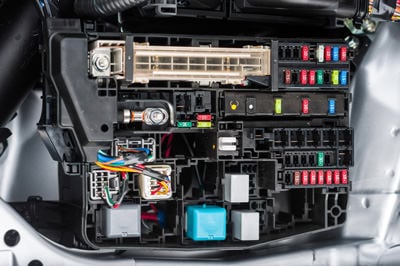Efficient electrical system troubleshooting solutions for improved performance.
Efficient electrical system troubleshooting solutions for improved performance.
Blog Article
Top Tips for Effective Electrical System Troubleshooting
Fixing electric systems requires a systematic method, based in an extensive understanding of electrical concepts and safety and security procedures. The subtleties of reliable troubleshooting extend beyond plain technological expertise; comprehending just how to record findings and prioritize safety can dramatically influence end results.
Understand the Essentials
Recognizing the basics of electric systems is crucial for effective troubleshooting, as a strong foundation allows service technicians to diagnose and solve issues more successfully. A detailed understanding of electric principles, such as voltage, present, resistance, and power, is important in identifying the root causes of problems. Voltage is the electrical prospective difference that drives existing via a circuit, while resistance opposes the flow of existing, influencing the overall performance of the system.
Experience with circuit parts, consisting of resistors, capacitors, diodes, and switches, is likewise vital. Each element plays an unique function in circuit behavior and can affect performance when malfunctioning. Furthermore, comprehending series and identical circuit setups is important, as these plans affect the circulation of voltage and current within the system.
Moreover, expertise of safety and security protocols is vital. Specialists need to understand prospective risks, such as shock and short circuits, to execute secure troubleshooting techniques. By mastering these fundamental ideas, service technicians boost their capacity to carry out effective diagnostics and fixings, eventually bring about boosted performance and dependability of electrical systems. This fundamental knowledge is the cornerstone of effective troubleshooting endeavors.
Gather Necessary Tools
Reliable troubleshooting of electrical systems requires the right set of tools to identify and deal with concerns properly. A fully equipped professional can considerably boost effectiveness and efficiency in identifying issues. Essential tools include a multimeter, which determines voltage, present, and resistance, permitting for specific evaluations of electric components. Secure meters are also beneficial for determining present without detaching the circuit, making certain safety and ease.
Furthermore, insulated hand devices such as screwdrivers, pliers, and wire strippers are vital for safely controling electrical links. It is additionally a good idea to have a circuit tester accessible to validate the existence of voltage in electrical outlets and wires. For more complex systems, a thermal imaging cam can help identify overheating components, suggesting possible failures.

Follow a Systematic Method
Having actually collected the ideal devices, the following action in repairing electric systems is to follow a systematic method. A systematic method makes certain that professionals can determine faults successfully and precisely, decreasing downtime and protecting against unnecessary repair services.
Begin by examining the system's schematic diagrams and specs. This includes monitoring each element systematically, starting from the power source and working in the direction of the tons.
Utilize testing equipment, such as visite site multimeters and oscilloscopes, to gather unbiased information about voltage, current, and resistance at numerous points within the system. This empirical proof will direct your troubleshooting initiatives and aid to validate or remove prospective root causes of failing.
In addition, consider environmental elements that might affect the system's performance, such as temperature click for more info variations or dampness access. A thorough assessment of circuitry, links, and parts will ensure that all opportunities are accounted for.
Record Your Searchings For
Thorough documentation is crucial in the fixing procedure of electric systems. Accurate records boost the effectiveness of determining repeating issues and assist in interaction amongst group members. Each searching for must be carefully noted, including signs and symptoms observed, examinations carried out, and the results of those tests. electrical system troubleshooting. This technique not just aids in comprehending the origin of the trouble however additionally functions as a recommendation for future troubleshooting efforts.

In addition, preserving a log of components changed or repairs carried out is vital. This information sustains stock administration and can help assess the long life and dependability of specific components.
Eventually, the paperwork process should be complete yet concise, making it possible for very easy retrieval and review - electrical system troubleshooting. By prioritizing thorough documents, technicians can create a valuable understanding base that not just aids in current troubleshooting yet additionally encourages future maintenance efforts, therefore improving total system reliability

Prioritize Security Actions
Acknowledging the fundamental threats related to electric systems is essential for ensuring security throughout troubleshooting. Electric shock, burns, and tools damage are simply a few of the prospective threats that specialists face. Focusing on safety steps is not only a legal commitment yet also an ethical vital that safeguards both the professional and the surrounding setting.
Before commencing any troubleshooting job, service technicians need to put on suitable personal safety equipment (PPE), consisting of shielded handwear covers, shatterproof glass, and flame-resistant clothes. Making certain that the job location is dry and free of clutter can substantially decrease the risk of mishaps. Furthermore, it is vital to de-energize circuits before starting any job, verifying that they are not live through using a multimeter or voltage tester.
Developing clear interaction protocols with employee is likewise crucial; this makes sure that every person is conscious of prospective dangers and the status of the electric system being dealt with. Having an emergency feedback strategy in area can prove vital in the event of a case. By focusing on safety and security measures, service technicians can properly reduce dangers and promote a safer workplace.
Final Thought
Effective electric system fixing counts on a thorough understanding of fundamental principles and a systematic method. Prioritizing security measures makes sure the well-being of people involved and the integrity of the electric system.
Report this page